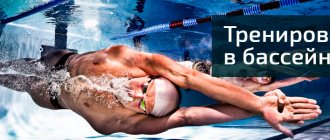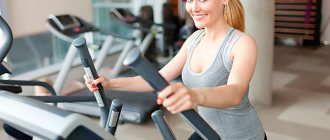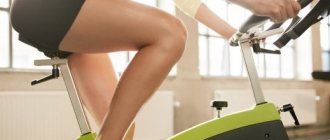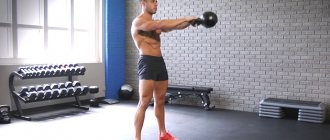Many professional bodybuilders and fellow athletes do cardio in the morning on an empty stomach in order to burn more fat. Zozhnik digs up scientific data on this issue.
The logic of this strategy is based on the fact that after waking up in the morning, our body has small reserves of glycogen, which was used as an energy source during sleep, so fasted cardio will burn more fat. And while this strategy may seem tempting at first glance, science doesn't support fasted cardio as a more effective way to lose fat than training after a meal.
Brief physiology of fat burning
In order to understand the big picture, it is necessary to look into the physiology of fat burning. Fat burning takes place in three stages:
- Mobilization of fatty acids (lipolysis) – “dissolution”, breakdown of fat cells into fatty acids,
- Transport of fatty acids
- Fatty acid oxidation (burning fat as an energy source).
Mobilization is the release of fatty acids from the fat cell. This process is mainly controlled by the hormone insulin, as well as catecholamines, while growth hormone, cortisol and other hormones take part in this process.
At the next stage, the fatty acids released from the fat cell are transported into the bloodstream. The final stage is oxidation, which is the burning of fat inside the tissues that need fuel - muscles, liver and heart.
Review by Researcher Schoenfeld
In 2011, an expert presented an in-depth review in the Strength and Conditioning Journal entitled, “Does Fasted Cardio Really Maximize Fat Burning.”
At the beginning of his work, the scientist emphasized that considering burning fat, which is used as a source of energy only during training, is a short-sighted strategy. The human body is a dynamic system that constantly adapts and regulates the proportion of fat and carbohydrates used as an energy source. This regulation occurs due to the production of hormones, activation of enzymes and other factors that can change at any time. Typically, if you burn more fat during exercise, your body will use more carbohydrates as an energy source during the rest period, and vice versa.
Thus, fat burning should not be considered in a short training period (hour to hour), but in the long term. This is the only way a person will be able to notice significant changes in body composition.
Scientist Horowitz compared how fat was burned in people with average training experience during training at different intensities. During the experiment, participants pedaled an exercise bike at different intensities over 4 training sessions. During the first two workouts, subjects consumed carbohydrates with a high glycemic index at the 30th, 60th and 90th minutes, while:
o The first workout was performed at 25% of maximal oxygen consumption (low intensity).
o The second – at the level of 65% of the MOC (moderate intensity).
During the remaining two workouts, the subjects trained at the same intensity, but on an empty stomach and without eating during the workout itself.
The results found that during low-intensity, carbohydrate-consuming exercise, fat breakdown, or lipolysis (in which fat cells release fatty acids but fat is not burned yet), was reduced by 22% compared to fasted exercise.
However, until the workout passed the 80-90 minute mark, fat oxidation (burning itself) was the same both during fasted training and during training with carbohydrate consumption.
However, during moderate-intensity training, regardless of whether carbohydrates were consumed or training was on an empty stomach, the rate of fat oxidation was the same even after the subjects crossed the training mark of an hour and a half. And this is despite a 20-25% decrease in the lipolysis process and an increase in the concentration of free fatty acids (fatty acids that are ready for oxidation) in the blood.
Another study assessed how consuming carbohydrates before and during exercise affected fat burning.
In a randomized study using a crossover design and a blinded design, 7 endurance athletes pedaled a stationary bicycle for 120 minutes at 63% of maximum power output, followed by a training cycle in which subjects pedaled as fast as possible. As in the study above, participants trained at varying intensities over 4 training sessions.
1. In the first training session, subjects received a placebo before and during training.
2. On the second - placebo 30 minutes before training and carbohydrates every 15 minutes before the end.
3. On the third - carbohydrates 30 minutes before and placebo during training.
4. On the fourth - carbohydrates before and every 15 minutes during training.
Result: There is no evidence that consuming carbohydrates before or during exercise interferes with fat oxidation.
Schoenfeld points out that these two studies show that during fasted moderate- and high-intensity cardio, significantly more fat is broken down than oxidized. At the same time, fatty acids that have not undergone the oxidation process are converted back into adipose tissue, as a result of which the increased lipolytic effect (fat breakdown) that fasting training provides is negated.
In simple terms, during fasted training, our body does not fully utilize the fat released from fat cells in a free form for burning, since the concentration of fat in the blood exceeds the body's ability to use it as an energy source.
How to determine the type of activity
First, you need to understand which workouts are cardio and which are strength, and what are their main differences from each other.
The first includes aerobic exercise - that is, low-intensity exercise in which the body draws energy from the oxidation products of fats and glucose. Such exercises strengthen the cardiovascular system, normalize blood pressure, improve blood flow and increase the overall endurance of the body, and also, if prolonged enough, contribute to the burning of fat deposits. Cardio includes:
- walking at a moderate or fast pace;
- run;
- cycling or using an exercise bike;
- dancing;
- aerobics;
- swimming;
- jumping rope, etc.
The second type is anaerobic exercise - one in which the body takes energy from glycogen stores, which are stored in the muscles. Such workouts are much more intense, they are aimed at increasing muscle mass, strengthening the muscle corset, creating a beautiful body contour, and accelerating metabolism. This type includes:
- any strength training with or without additional weights (push-ups, squats, lifting barbells, working with dumbbells or kettlebells);
- exercises on sports equipment.
Disadvantages of training on an empty stomach
American Councilon Exercise expert Pete McCall notes that due to the elevated cortisol hormone in the morning, fatty acids unused during training are not simply converted back into adipose tissue, but are more likely to find refuge in the abdominal area. The expert points out that rather than burning more fat by working out on an empty stomach, we may actually be making our stomachs less attractive.
Yale University scientists have found that there is a relationship between increased cortisol and fat accumulation in the abdominal area.
You can also recall a study using a crossover design method conducted by Korean scientists in 1999:
Experts compared the effect of training on an empty stomach with training before which a mixture of glucose and milk was consumed. The results revealed that pre-exercise consumption of glucose in milk caused a greater spike in increased post-exercise oxygen consumption (EPOC effect) compared to fasted exercise.
Schoenfeld notes that other studies have found similar results. This is an indicator that eating before training has an advantage over fasted training, allowing you to burn more calories during the rest period .
The fact is that training after eating allows you to train more intensely than when a person trains on an empty stomach. This is quite natural, because if the body receives a certain amount of energy before training, a person can train more intensely. As a result, due to higher training intensity, a person is able to burn more calories both during the training itself and after its completion due to a more pronounced EPOC effect .
Are there any contraindications
There are no strict contraindications to walking, as it is the most natural activity imaginable. The only thing worth noting is the sheer number of steps a person must take.
There are no restrictions for young and healthy people - you can walk at least 10 or 20 thousand steps at a fast or slow pace, this cannot negatively affect the body. For older people, slightly different rules apply.
Many ongoing studies have shown that older people do not need to walk exactly 10,000 steps; a less intense load of 3.5-7 thousand steps is sufficient for them, which will also have a beneficial effect on health.
For example, professor of medicine Ai-Ming Lee from Harvard University measured the number of steps taken among 16 thousand women aged 70 years and older. At the end of the study, she estimated the mortality rates of the different control groups. It turned out that to reduce the risk of premature death, it is enough to take 4.5–7.5 thousand steps a day, and exceeding this mark did not affect the result in any way. This proves that walking is important for health and longevity, but you don't have to walk exactly 10,000 steps to achieve results. “If you lead a sedentary lifestyle, even a very modest increase in exercise will improve your well-being,”
— noted Ai-Ming Lee.
Most Valuable Research
In 2014, one of the most valuable studies was published in the Journal of the International Society of Sports Nutrition (JISSN), which compared fasted and postprandial training. The scientists did not study the degree of influence of the two training strategies on the process of lipolysis or fat oxidation, but the resulting changes in body composition.
The purpose of the experiment was to study changes in fat and fat-free mass in exercisers either on an empty stomach or after a meal. Over the course of 1 month, 20 subjects completed 1 hour of moderate-intensity cardio training 3 times a week. In this case, the participants were divided into 2 groups:
o Group A trained in the morning on an empty stomach.
o Group B – after meals.
It's also important to note that both groups followed a researcher-controlled eating plan with the same 500-kcal energy deficit and macronutrient ratio. Research result:
The changes in body composition that were observed due to the combination of a hypocaloric diet with aerobic training were the same regardless of whether the subjects trained in a fasted state or after a meal.
Optimal time for cardio training
- In the morning on an empty stomach
During long sleep, all energy is spent on maintaining the vital functions of the body: breathing, the work of the heart and internal organs. All carbohydrates will be used up at night, unless of course you eat at night. Before training, your meal should consist only of proteins that are quickly digested. These can be egg whites, whey protein isolate (Impact Whey Isolate), BCAA amino acid complex.
— After strength training
The body will spend all its energy during strength training, so the optimal time for cardio is immediately after it. There should not be full meals between strength training and cardio training. Before cardio, you can drink a serving of BCAAs.
- Evening time
If you eat only protein foods in the afternoon, you can do low-intensity cardio training in the evening before bed. It is advisable to take the last meal 1.5 – 2 hours before training.
Exercising on an empty stomach doesn't burn more fat
In a discussion about the results of the study, scientists indicated:
It has previously been hypothesized that fasted training encourages the body to use fat rather than carbohydrates for fuel, thereby reducing body fat to a greater extent than postprandial training. The data from our study refutes the validity of this hypothesis. Although both groups lost significant amounts of weight and fat mass, there were no differences in end results regardless of nutritional status.
Based on all the information presented above, we can come to the conclusion that for the final result in order to burn fat, it does not matter when and under what conditions we train. It all depends on the personal preferences of each person. It’s especially important to consider cardio; training after meals will not bring results if you do not follow the law of energy balance . In the end, everything will be decided by whether you spent more calories per day than you received from food .
By the way, the authors of the above study still admit that due to the relatively short period of the experiment and the small group of subjects, we cannot discount the possibility that under certain conditions, fasting training tactics may have its advantages. It is noted that in order to finally resolve the debate, it is necessary to conduct long-term studies using a larger group of subjects.
Cardio machines
Let's look at what kind of exercise equipment modern gyms are equipped with for cardio training:
- First of all, this is, of course, a treadmill (the primary and ideal option for cardio training)
- Exercise bike (an excellent unit for training the muscles of the legs and buttocks)
- Ellipsoid or orbitrack (uses all muscle groups simultaneously)
- Stepper (a primitive version of a treadmill purely for walking)
- Rowing machines (a good option for pumping up the muscles of the back, shoulder girdle and hips).
It should be noted here that by constantly using only one of them, it will be difficult to achieve the required result. It is recommended to alternate exercise machines, developing and pumping different muscle groups, giving them the necessary load.










